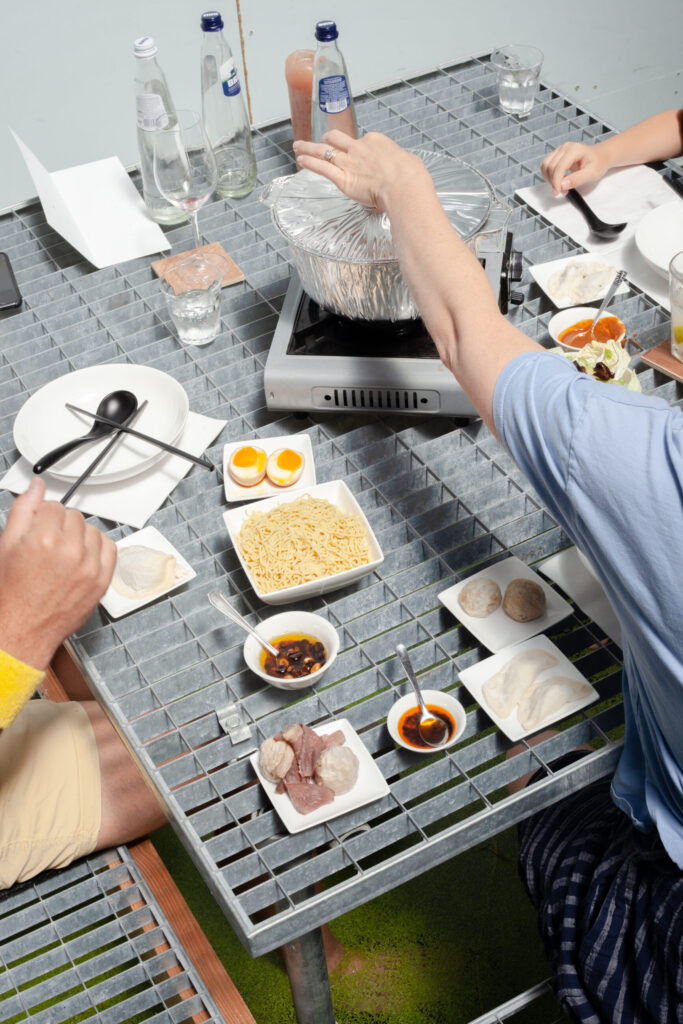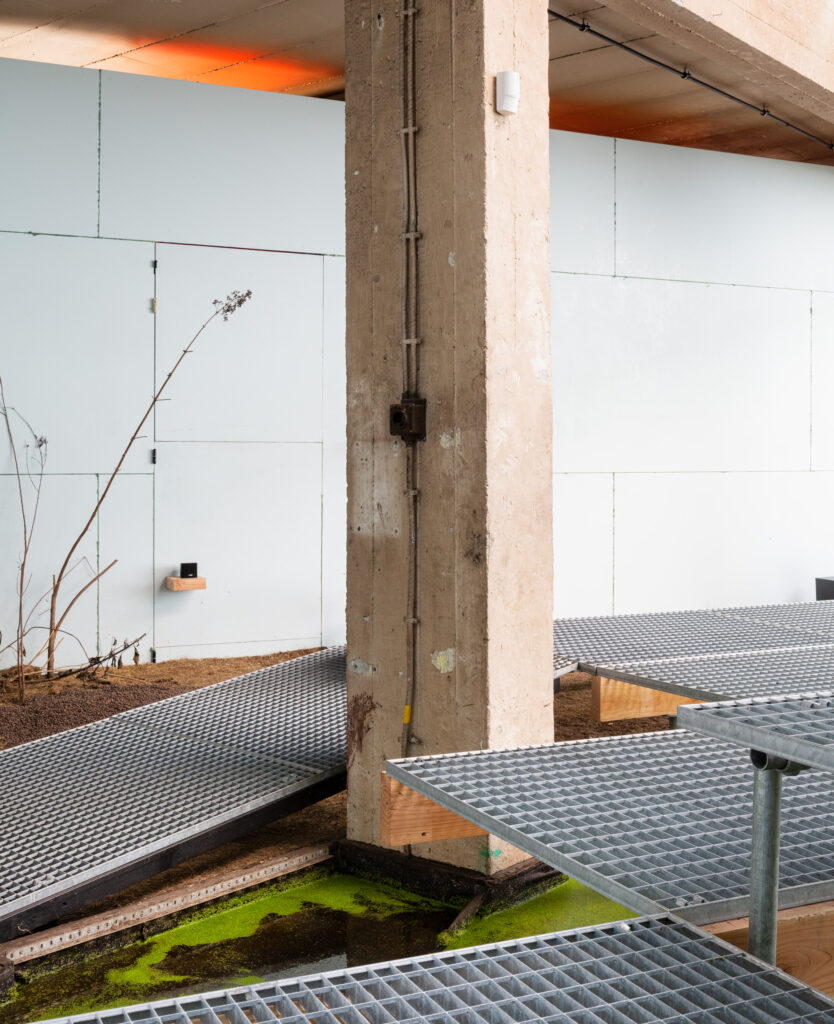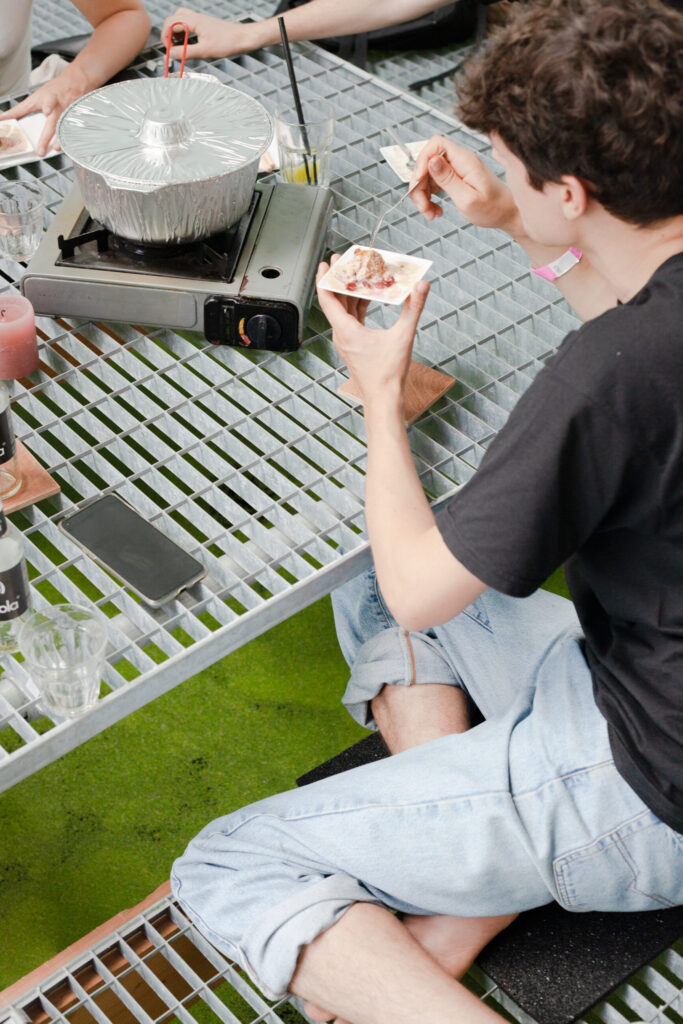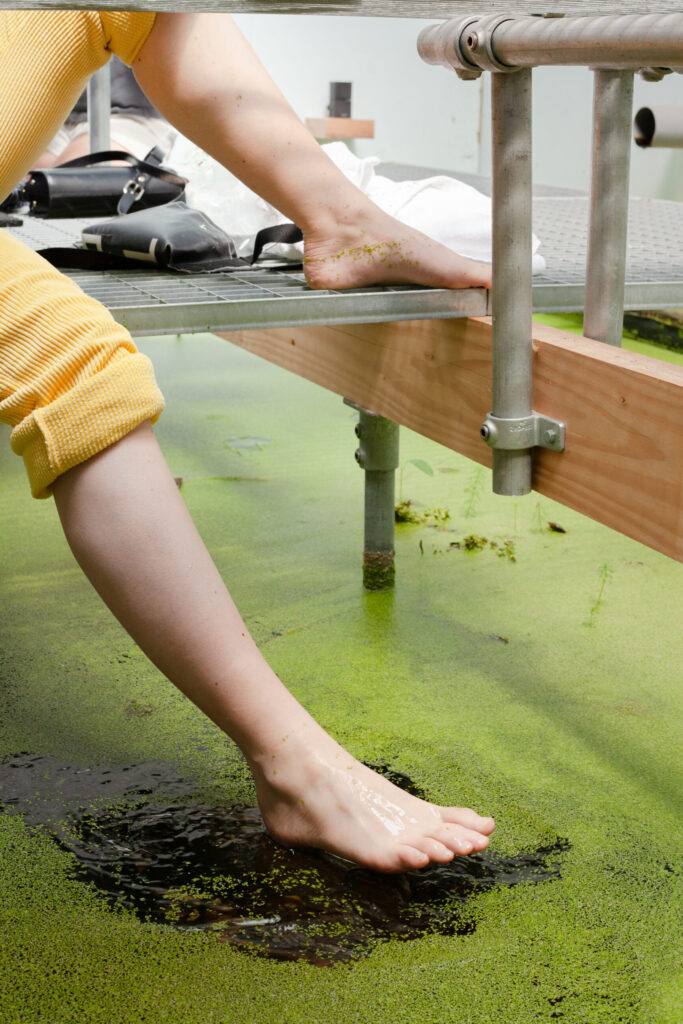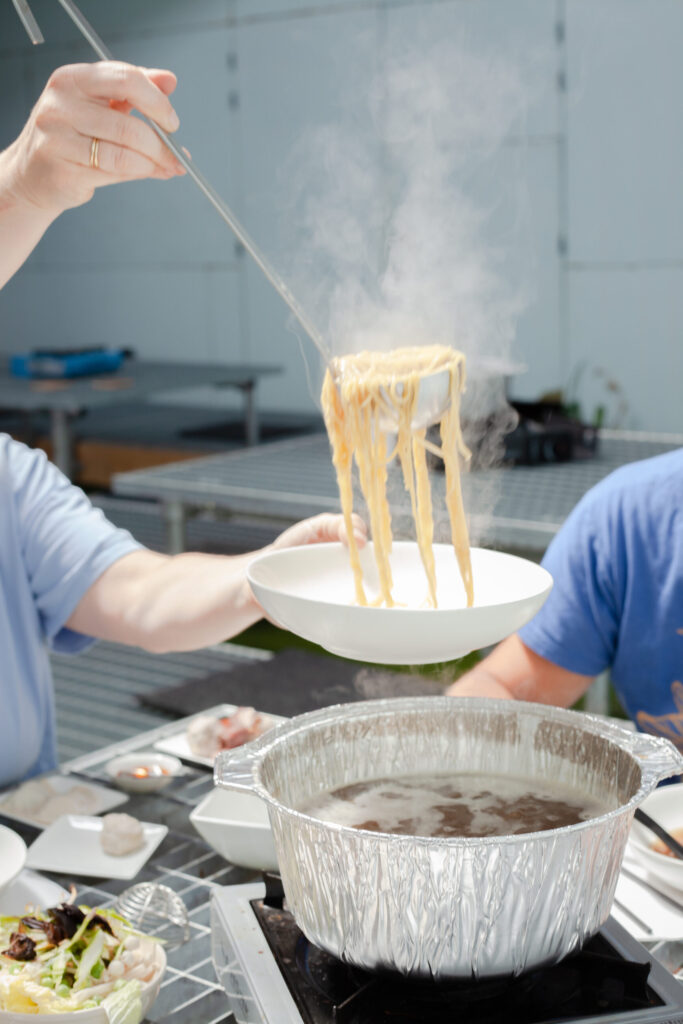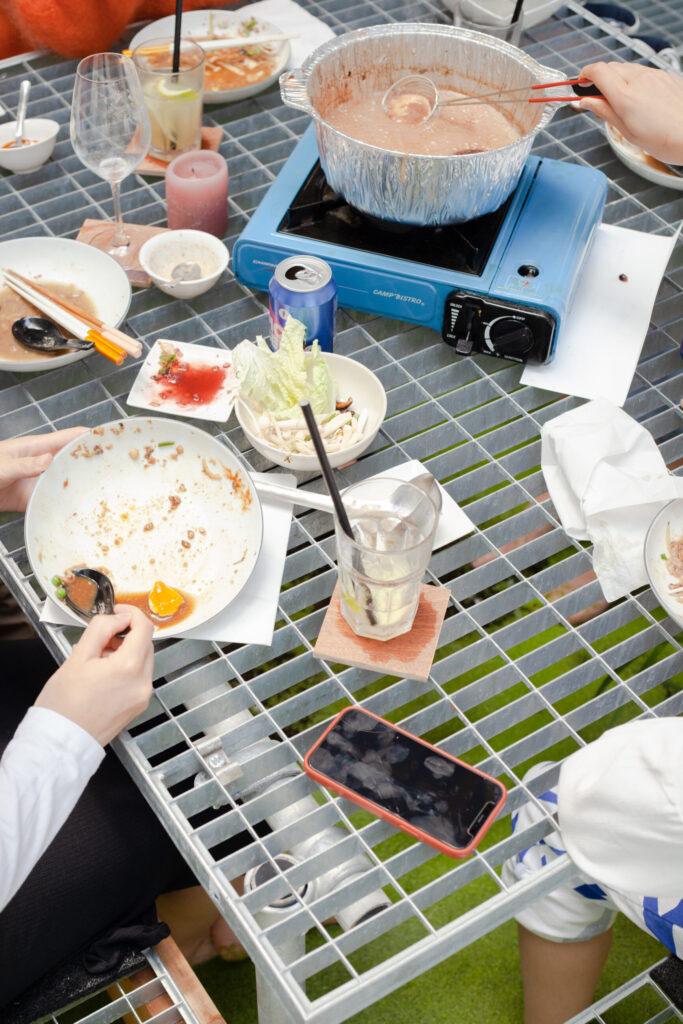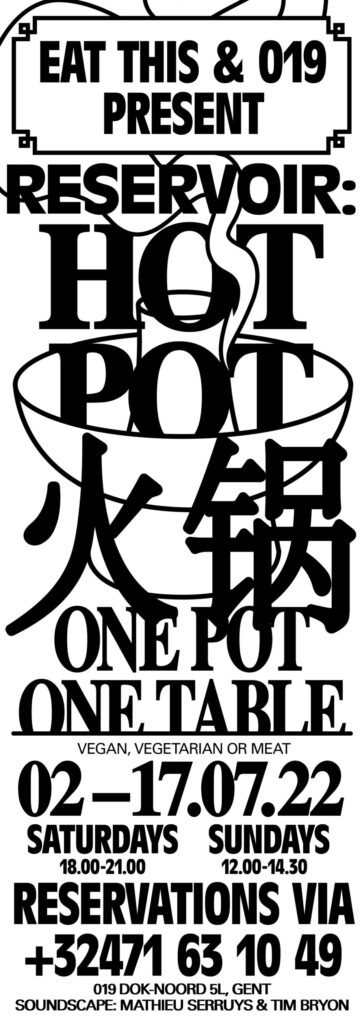RESERVOIR: HOT POT
EAT THIS and 019 present:
02/07/2022 – 17/07/2022
Every Saturday (18.00—21.00) and Sunday (12:00 — 14:30)
RESERVATIONS VIA +32471 63 10 49
019 STAGES TO EAT THIS (1)
- Put on your boots
- Sit, and stir the water
- Share the table with exquisite guests
- Add ingredients (2)
- Detect fish
- Check your boots for leaks
- Detect leeches (3)
- Simmer
- Simmer ingredients
- You are immersed in the swamp
- The simmering swamp is adding flavour to, (4)
- while it is also extracting flavour from, your ingredients
- Again, check the boots for leaks
- You are delicious
- as are the guests at your table (5)
- Your boots shouldn’t be leaking
- It’s hard to be a vegan when you’re bathing in the soup you’re eating
- Eat the swamp
- Eat the guests that are eating you. Eat yourself. Eat the rich
Digest
1.
This is a ‘hotpot’. The hotpot is said to be of Mongolian origin. Raw ingredients are cooked in a pot of stock, placed and kept warm on the dining table.
2.
In The Empire of Signs, Roland Barthes describes the characteristics of Japanese food, such as the hotpot-related sukiyaki: ‘Everything is the ornament of another ornament: first of all because on the table, on the tray, food is never anything but a collection of fragments, none of which appears privileged by an order of ingestion; to eat is not to respect a menu (an itinerary of dishes), but to select, with a light touch of the chopsticks, sometimes one color, sometimes another, depending on a kind of inspiration which appears in its slowness of the detached, indirect accompaniment of the conversation (which itself may be extremely silent)’ (1982 [1970], 22).
3.Haemopis Sanguisuga (Fam. Hirudinidae), also known as horseleech, or, in Dutch, onechte paardenbloedzuiger. This type of leech does not feed on blood, neither does it suck onto horses, as does the Limnatis nilotica (which so far hasn’t been spotted here). In Dutch, the adjective ‘false’ was added to designate this error. The horseleech has 2×5 eyes and feeds on invertebrates. It is the most common type of leech in northern Europe.
4.
In 1783, Antoine Lavoisier, commonly acknowledged as the father of modern chemistry, investigated the properties of bouillon and tried to establish its preferred density. Among other things, precise experimental set-ups had to reveal which part of an animal could offer the most nutritious broth. Tried for treason in post-revolution France, Lavoisier was decapitated in 1794.
5.
To this day, the chemical peculiarities of broth remain largely unknown. Isn’t it astonishing, French chemist Hervé This (2020) writes, that we can send spacecrafts to Mars and that we know the temperature on the inside of stars, but are relatively ignorant when it comes to the chemistry that leads water and meat to form a bouillon?
——————
€ 28 / PER PERSON EXCL. DRINKS
RESERVATIONS VIA +32471 63 10 49
Menu:
SOUNDSCAPE: MATHIEU SERRUYS & TIM BRYON
and
SHITAKE BOUILLON
FLAVOURS: coconut paste, curry paste, kimchi and miso paste, chili paste
VEGETABLES: enoki, bean sprouts, Chinese cabbage, purslane, peas, warmoes, cauliflower
WITH: rice or noodles
choose
MEAT: mascarpone sauce, pastrami charcuterie and balls, dumplings, marinated egg
VEGAN: noble yeast mayo, dumplings, porcini, tofuballs
VEGGIE: mascarpone sauce, dumplings, ceps, tofuballs
and
DESSERT: (rum) raisins, chocolate ice-cream with crumble of biscuits, pomegranate chocolate
We serve adapted natural wines, craftbeer and home made lemonades
